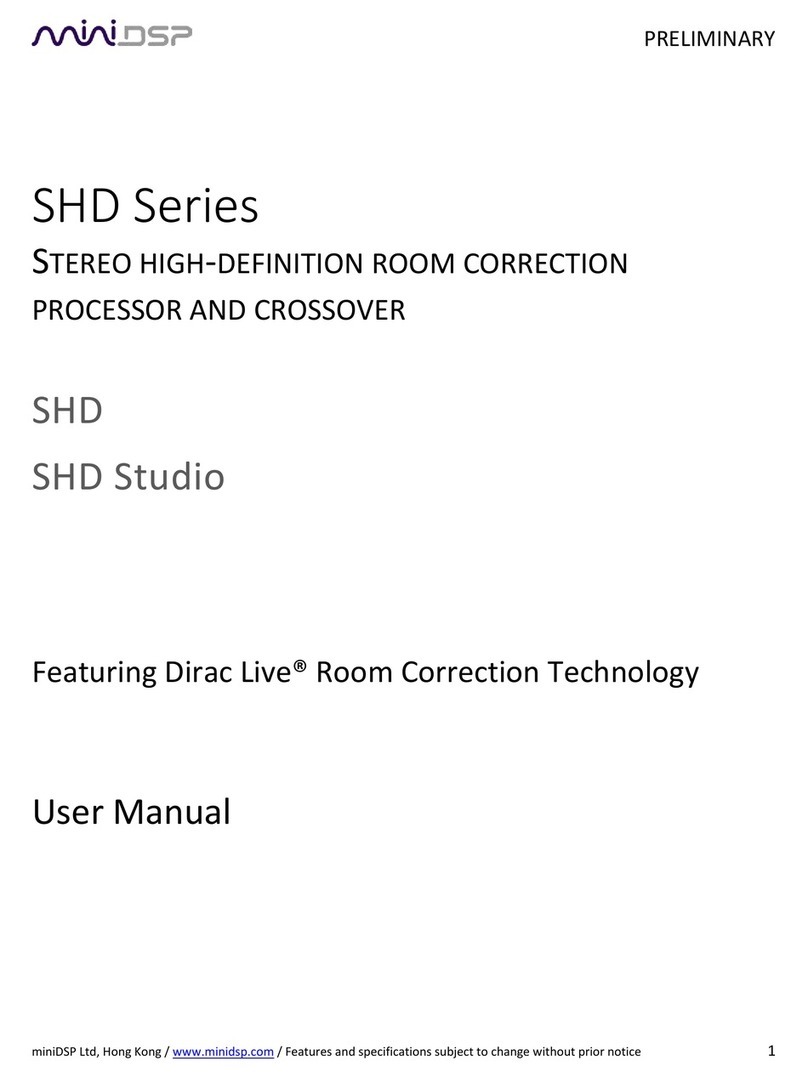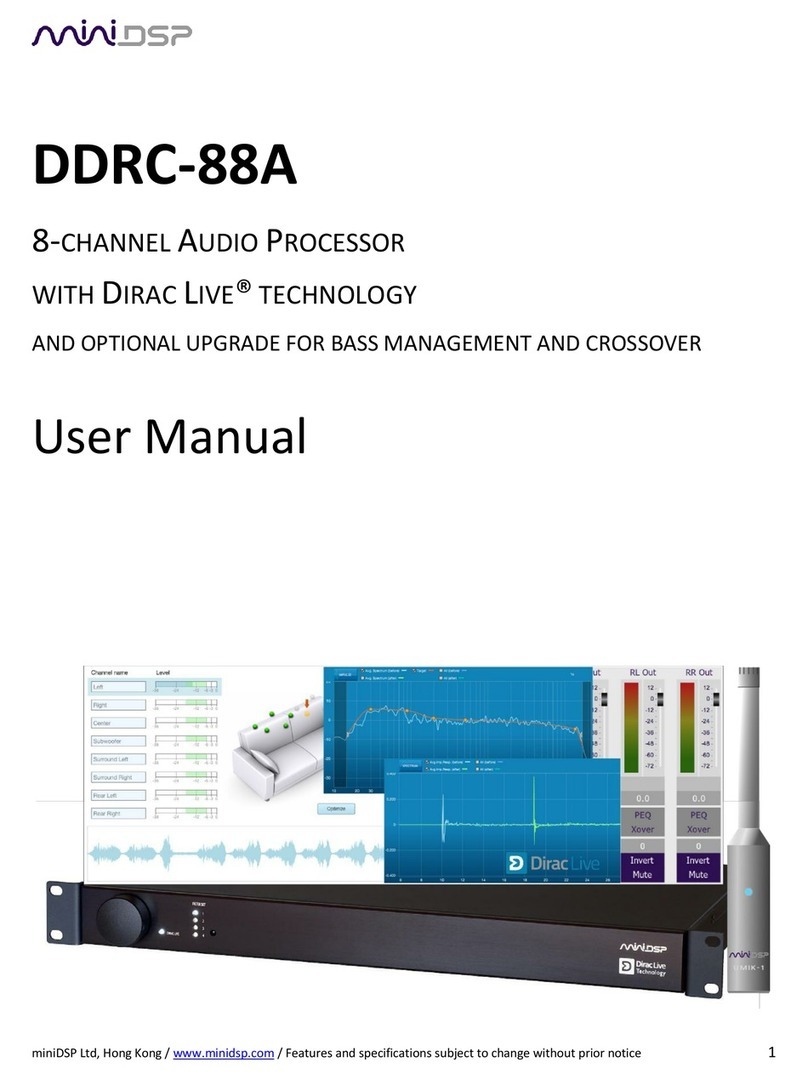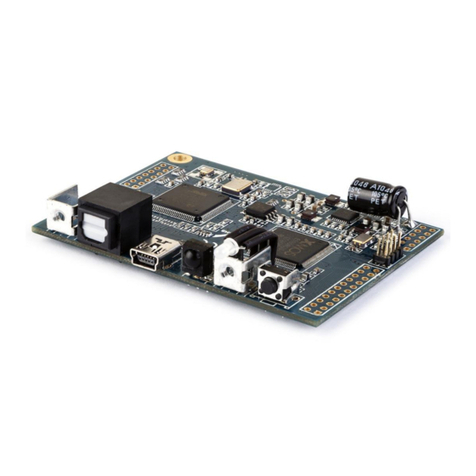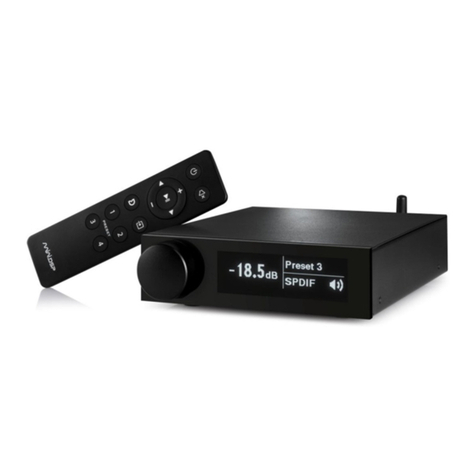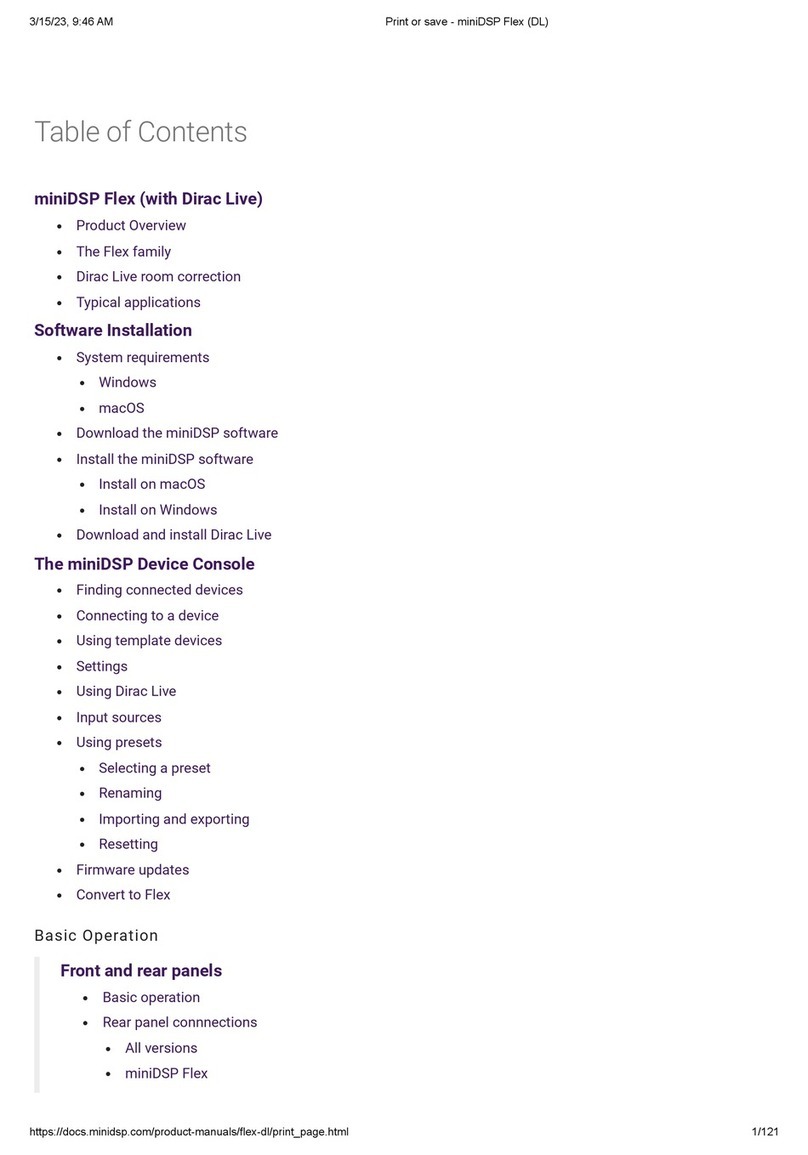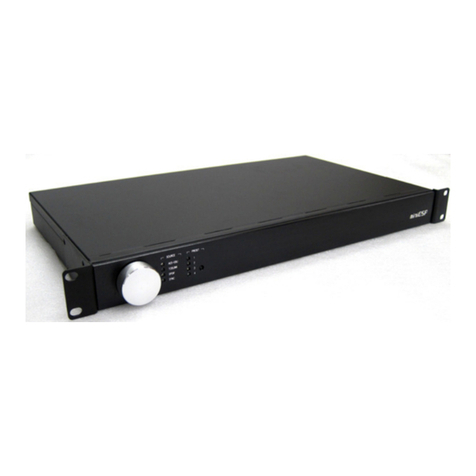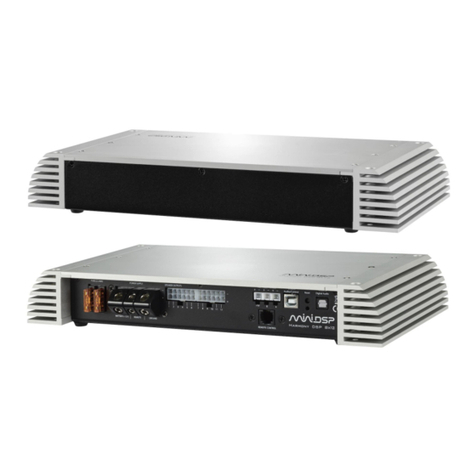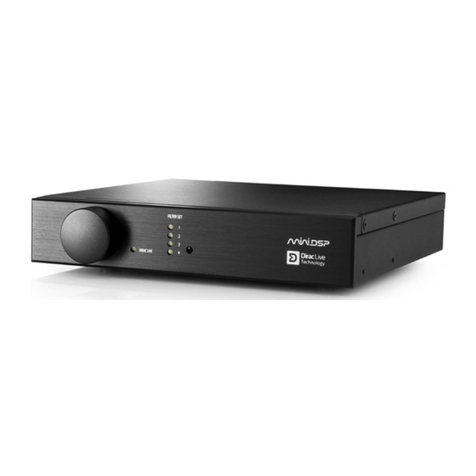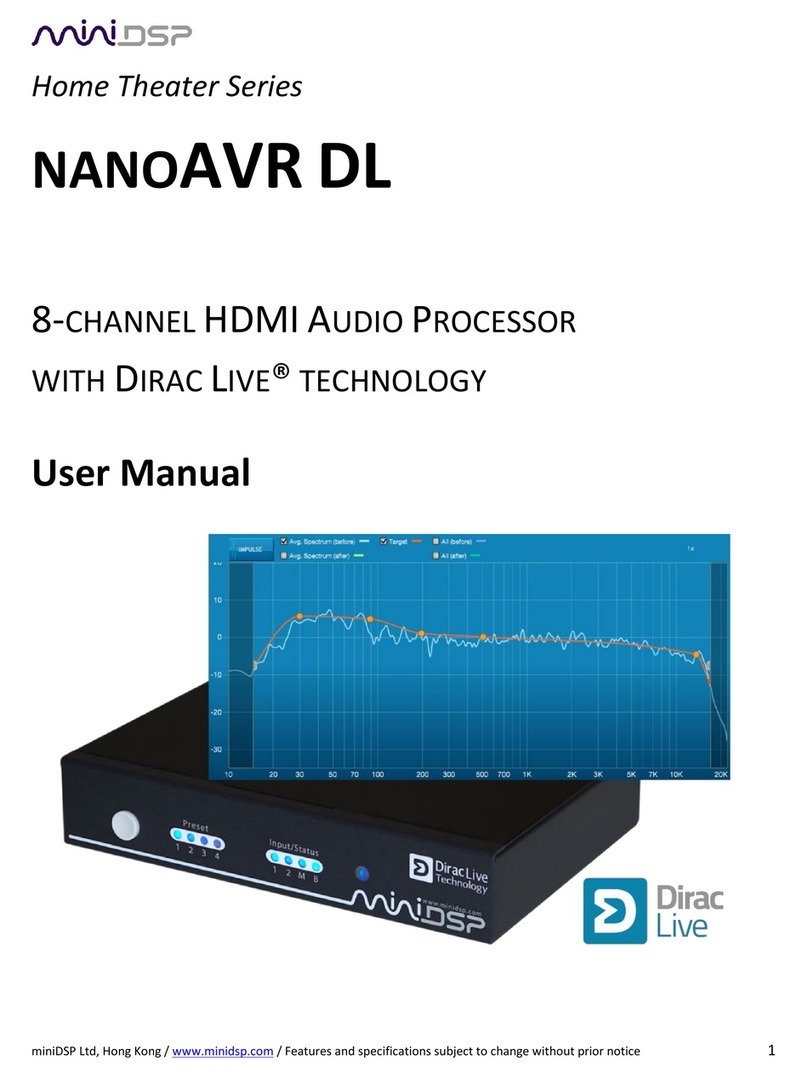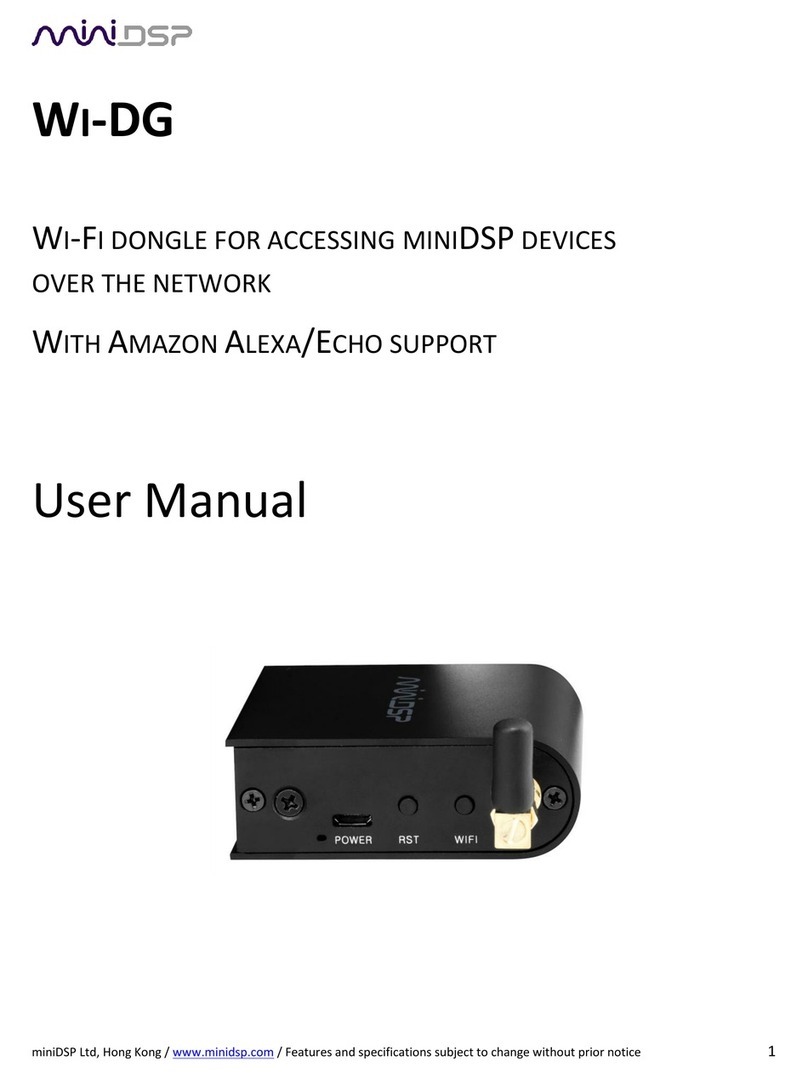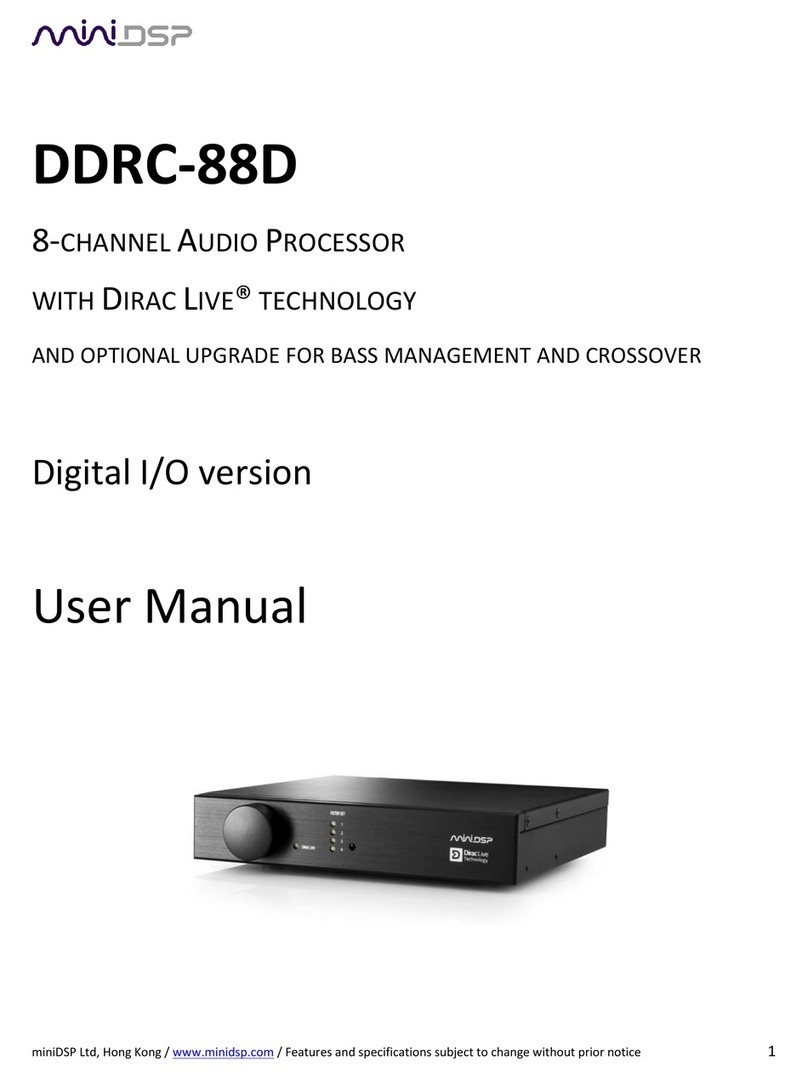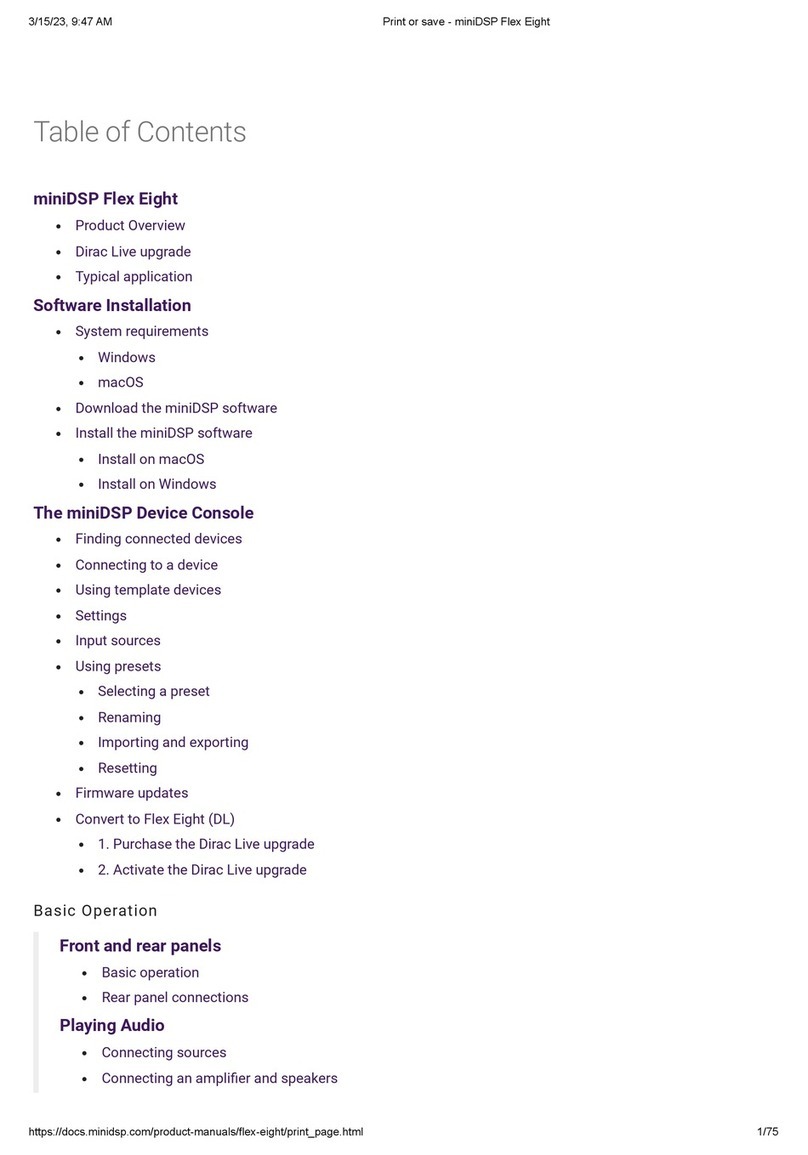
miniDSP Ltd, Hong Kong / www.minidsp.com / Features and specifications subject to change without prior notice 3
CONTENTS
Important Information ...............................................................................................................................................5
System Requirements.............................................................................................................................................5
Disclaimer/Warning................................................................................................................................................5
Warranty Terms......................................................................................................................................................6
FCC Class B Statement ............................................................................................................................................6
CE Mark Statement.................................................................................................................................................6
A note on this manual ............................................................................................................................................6
1 Product Overview ................................................................................................................................................7
1.1 The miniDSP concept..................................................................................................................................7
1.2 Choosing a plugin .......................................................................................................................................8
1.3 Ordering plugins .........................................................................................................................................8
2 Board overview and Connectivity........................................................................................................................9
2.1 Board layout ...............................................................................................................................................9
2.2 DC Power ................................................................................................................................................. 10
2.3 USB .......................................................................................................................................................... 11
2.4 J1 expansion header................................................................................................................................ 12
2.5 J2 expansion header................................................................................................................................ 12
3 Off-the-shelf accessories and connection ........................................................................................................ 13
3.1 VOL-FP ..................................................................................................................................................... 13
3.1.1 Operation of VOL-FP........................................................................................................................ 13
3.1.2 Infrared remote control................................................................................................................... 14
3.2 DIGI-FP..................................................................................................................................................... 15
3.3 AN-FP and DA-FP ..................................................................................................................................... 16
3.4 MiniDAC8................................................................................................................................................. 17
4 I/O Interfaces .................................................................................................................................................... 18
4.1 I2S overview ............................................................................................................................................ 18
4.2 I2S clock modes ....................................................................................................................................... 19
4.2.1 Master mode ................................................................................................................................... 19
4.2.2 Input slave mode ............................................................................................................................. 20
4.2.3 Output slave mode .......................................................................................................................... 21
4.2.4 Summary of I2S clock modes........................................................................................................... 21
4.3 I2S usage notes........................................................................................................................................ 22
4.4 S/PDIF connectivity.................................................................................................................................. 22
5 Plugin installation.............................................................................................................................................. 23
5.1 Windows.................................................................................................................................................. 23
5.2 Mac OS X.................................................................................................................................................. 24
6 Plugin Architecture ........................................................................................................................................... 25
6.1 miniSHARC 4x8 plugins............................................................................................................................ 25
6.1.1 Input tab .......................................................................................................................................... 25
6.1.2 Routing tab ...................................................................................................................................... 26
6.1.3 Output tab ....................................................................................................................................... 26
